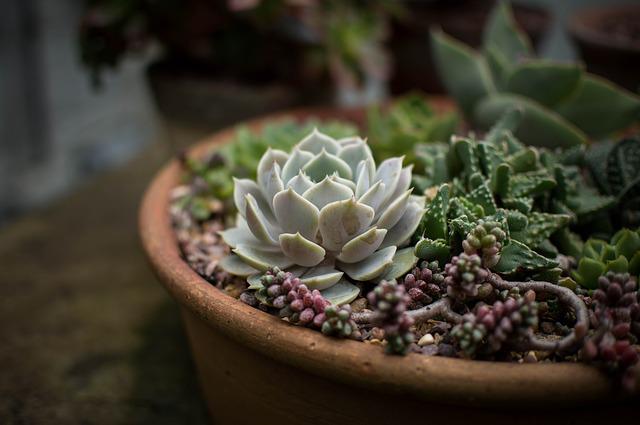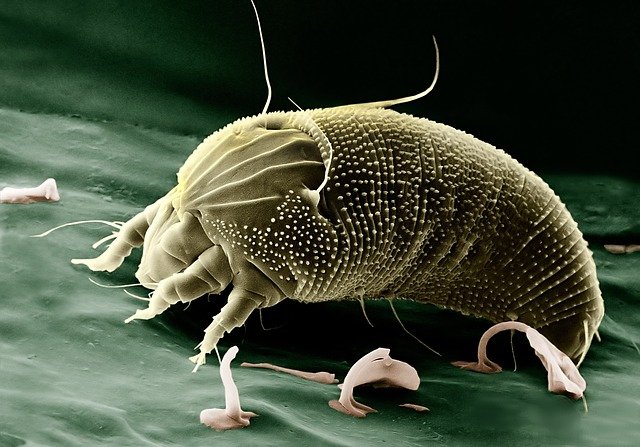It can be upsetting to see your succulent turning white. Succulents are one of the most common house plants. They are popular favorites of gardeners and house plant parents because they need minimal care and grow all year long. Seeing evergreen and thriving plants as you rest from the day’s activities is beautiful.
Exposure to extreme temperatures, either too hot or too cold, can also cause succulent leaves to turn white.
Therefore, this article focuses on the common causes, signs, and preventive tips that keep your succulent from turning white.
Why Succulents Make Great House Plants
Besides being easy to raise as house plants, succulents make excellent house plants for the following reasons:
- Succulents take in all the carbon dioxide we produce from respiration and supply us with generous amounts of oxygen. As such, they are natural air purifiers and improve the general well-being of house occupants.
- Succulents have mood-lifting effects. Although the mechanism they achieve this is unknown, most plant parents attest to it.
- Some succulents, such as aloes, are therapeutic, and their sap is a common ingredient in soaps, oils, and creams.
- Most succulents have leaf adaptations of spikes and thick, elongated branches. These keep them from shedding leaves and keep the home clean. So, it is easier to manage them within the living space
- They need less watering than most other plants. As such, they are ideal for busy plant parents or beginner gardeners.
- Even when they get sick or start to look unhealthy, it does not take too much attention to nurse them back to health.
Causes for Succulents Turning White

Due to their resilient spirits, it isn’t comforting when plant parents notice their succulents turning white. Some of the common causes for succulents turning white include:
1. Excessive Exposure to Sunlight
Succulents have varying tolerance levels to exposure to sunlight. Therefore, although most succulents love sunlight, excessive exposure to sunlight may result in your succulents getting sunburns.
This usually occurs when you keep your succulents under the sun’s direct heat for long periods or expose them to extreme weather conditions. Signs that your succulent is experiencing sunburns include:
- Sudden white patches on the succulent’s stem and leaves
- Patchy discoloration of areas most exposed to sunlight
- In severe cases of sunburns, the white patches turn progressively brown and start to wilt
Note that these sunburn patches will never turn green, even after you stop exposing them to extreme sunlight. Yet, the succulents will get rid of such patches as they grow older and produce new leaves.
2. Pest Infestation
Another common cause for your succulent turning white is pest infestation. Several bugs are plant pest culprits. These include:
- Mealybugs: These are the most common succulent plant pests. You will often notice that your succulent is turning white and having fuzzy edges. This implies that the bug is sucking the saps out of your succulent and leaving it limp and dead.
- Spider Mites: These tiny arachnids often spin delicate, thin webs at the underside of leaves or junctions between two leaves.
- Scale Bugs: These often deposit white dots on the leaves and stems of the succulents.
These all share a common characteristic of destroying the succulent’s leaves, stems, and roots by depleting the nutrients within the sap and leaving the succulent ill or dead. They also cause dehydration, which accounts for the succulent turning white.
3. Powdery Mildew
Succulents turning white can also be an indication of a mildew infection. Powdery mildew is a fungal infection that grows on succulents when the conditions are right. This does not kill the succulent outrightly but affects its ability to synthesize nutrients.
Infected succulents begin to turn white from the underside of the leaves, and the infection spreads gradually throughout the entire plant. This causes stunting of succulents, and in severe infections, the leaves become limp and dead. Therefore, it is wise to catch the infection early and treat it promptly and appropriately.
4. Over Watering Succulents

Succulents turning white may be an indication that you are feeding them with excessive water. As a plant parent, it is sensible to want to supply your plant with adequate water. Yet, this is a problem for succulents because they have adapted to the low water supply. Their large roots and fleshy leaves store up water, and supplying excessive water can cause the roots to decay.
Succulents turning white dictate that the roots are rotting, and you may need to catch this sign early. When the leaves turn gray or yellow, it becomes most difficult to resurrect the succulents.
How to Save Succulents Turning White
This depends on the cause of your succulent turning white.
1. Excessive Exposure to Sunlight
When the succulents are turning white from excessive exposure to sunlight, here are a few helpful tips:
- Bring the succulents in and away from direct sunlight
- For succulents in the garden, you can build a shed or cover over them to protect them from direct sunlight
- Mist the plant leaves with water to keep them hydrated
2. Pest Infestation

To save your succulents from pest infestation, some helpful insecticides and miticides control the proliferation of these pests. But the following tips have also proved helpful:
- Isolate the infested plant from the remaining plant population
- Reduce pet and human traffic around the infested plant to prevent translocation of these pests to healthy plants
- Employ the services of a professional plant pest eliminator
- Use organic pesticides and oil to rid the succulents of such pests
- Routinely carry out pest control
3. Excessive Watering
The solution to overwatering succulents is to decrease the water supply to these plants. You can also:
- Introduce stone beds beneath the soil pots
- Use humidifiers to mist the leaves of succulents
- Create pot drains by making holes that allow excess water to drain.
Fun Fact
Each growth phase of succulents appears different from the next. Succulents have a broad spectrum that makes a house full of warmth and lively. They are beautiful to watch and easy to grow.
Even for beginner plant parents, succulents are amazing babies and can adapt to all management routines.
See more on succulents: Succulent Leaves Curling Down
Summary
There are many causes for your succulent turning white. These causes can cause adverse effects of rotting and stunting of the succulents. And yet, the succulents require minimal care to return to their healthy state.
The most common causes for succulent turning white are overwatering, excessive exposure to sunlight, pest infestation, and powdery mildew infection.
Using the tips discussed above, you can keep your succulents healthy and free of disease or pest infestation.
Frequently Asked Questions
Why is my succulent turning white?
Usually, when you overwater a succulent, the roots become rotting and prevent uptake of nutrients. This causes the succulents to turn white or yellow from malnutrition.
A succulent in this condition might not recover, but you can trim the affected parts of the stem. This will make way for new growth.
How do I get the white off my succulents?
The best way to deal with this is to find the cause of the whitening. Taking care of the problem will help your succulent to heal. However, you can also trim dead parts of the succulents to allow for new growth.
Why is my succulent losing color?
The succulent can lose color for various reasons, from management practices to pest infestation. You must be keen about finding the reasons for your succulent losing color and helping it thrive again.
Conclusion
Your succulent turning white is a nightmare for every plant parent. Yet, with the proper guidelines, you can prevent this from happening to your succulents.
You can also get the best tips for other house and garden plants and improve your gardening prowess with simple guidelines.

Hey, I’m Lisa and I’ve been an avid gardener for over 30 years. I love writing, talking and living in the garden! Feel free to connect with me on my socials below

